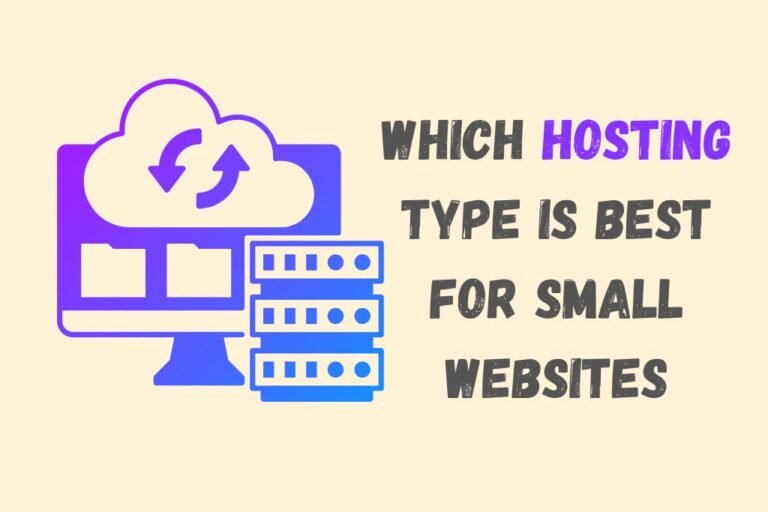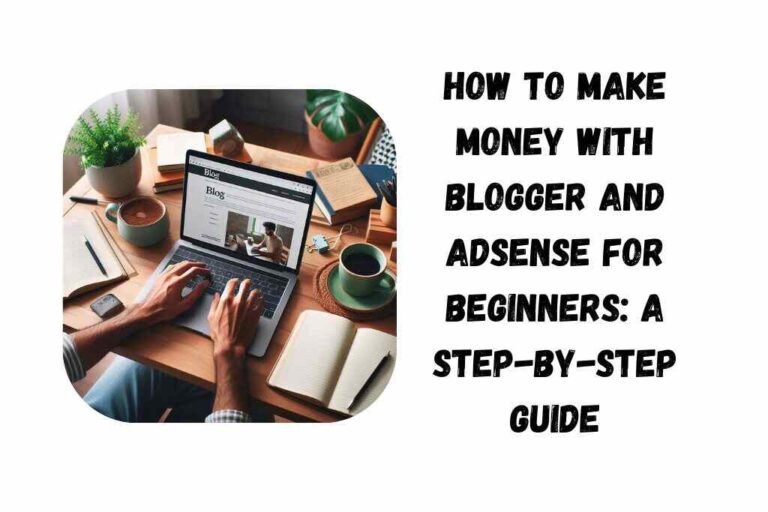Blogging Tools for Beginners
Starting a blog is exciting, but beginners often wonder which tools they need – many of the best blogging platforms and tools offer free plans. The right blogging tools can streamline content creation, design, and promotion. In this guide, we cover a wide range of beginner-friendly blogging tools: from content management systems and writing/editing software to SEO, design, email marketing, analytics, and monetization tools. Each section explains what the tools do and why they matter, with practical tips on how to use them. Follow along to set up your blog with the best tools for your needs.

Content Management Systems (Blog Platforms)
Every blog needs a platform to run on. WordPress is by far the most popular CMS; it’s free, open-source, and powers over 40% of all websites. It provides a simple post editor and thousands of free themes/plugins to customize your site. Beginners can use WordPress.com for a free hosted blog or WordPress.org for full control (you’ll need separate web hosting for the latter).
Blogger (by Google) is completely free and very easy to use. It offers simple templates and even a free blogspot.com address. Blogger integrates with Google services: it has built-in analytics and connects to Google AdSense so you can monetize your blog right away.
Wix provides a free plan and an intuitive drag-and-drop website builder. You can design your blog pages without any coding. (The free plan shows Wix ads and uses a Wix.com subdomain; paid plans remove ads and allow a custom domain.) Tip: Start with Wix’s free blog maker to experiment, then upgrade to a paid plan when you’re ready for a professional look.
Squarespace is an all-in-one site builder that includes hosting. Its drag-and-drop editor is user-friendly for beginners, and it handles security and updates automatically. Squarespace has built-in SEO and analytics features too. (Plans start around $25/month, with a 14-day free trial.) Tip: Use the trial to pick a template and try the editor before committing to a plan.
Ghost is a modern blogging platform built for writers and creators. It focuses on content and newsletters. You can publish free or paid posts and send email newsletters directly from Ghost. Ghost’s clean interface helps you focus on writing, and it has built-in membership and payment features to turn readers into subscribers.
Writing and Editing Tools
Great blog posts start with clear, polished writing. These tools help beginners write better:
- Grammarly (free and premium) is a popular writing assistant that catches spelling, grammar, and punctuation errors. It also suggests better word choices and tone improvements. Install the free browser extension to get instant writing feedback as you type your posts.
- Hemingway Editor is a free web tool for improving readability. Paste your draft into Hemingway, and it highlights long sentences, passive voice, and complex phrasing. The goal is an easy reading level, so use its suggestions to simplify sentences and keep readers’ attention.
- ChatGPT (by OpenAI) is an AI writing assistant that can help brainstorm ideas and draft content. Ask it for blog topic ideas, outlines, or alternate phrasing. Tip: Use ChatGPT’s suggestions as a starting point, then edit heavily with your own voice. Never publish AI text without reviewing for accuracy and originality.
SEO and Research Tools
Search Engine Optimization (SEO) tools help you find topics and optimize your posts so readers can find your blog:
- Google Keyword Planner (free) helps you discover search keywords related to your topic. It shows how often people search each term and how competitive it is. Identify long-tail keywords (more specific phrases) that match your niche.
- Google Trends (free) shows how interest in a topic changes over time. Use it to spot seasonal trends or rising subjects. For example, comparing related terms can reveal which one is gaining popularity.
- Yoast SEO is a WordPress plugin that analyzes your draft for SEO best practices. It checks your title, headings, meta description, and keyword use, and gives readability feedback. Follow Yoast’s suggestions (the green-light indicators) to improve each post’s chances of ranking.
- SEMrush (paid) is an all-in-one SEO toolkit. Its Keyword Magic Tool reveals related keywords, search volume, and difficulty. Beginners can use SEMrush’s free trial to uncover content ideas beyond what basic tools show.
(Optional) Ahrefs and SurferSEO are advanced paid tools for backlink analysis and content optimization. They are not required for beginners, but can be useful as your blog grows.
Bonus Tip: Use sites like AnswerThePublic or Quora to find what questions people are asking in your niche. Writing posts that answer those questions can attract targeted search traffic.
Design and Image Tools
Good visuals make your blog look professional and inviting. These tools help you create graphics and find images:
- Canva (free tier) is a drag-and-drop design tool with thousands of templates. You can make blog banners, social images, infographics, and more without any design experience. Tip: After designing a graphic, use Canva’s Resize feature to quickly convert it into different dimensions (for example, adapting a blog header for Facebook or Twitter).
- Adobe Express (formerly Spark) offers ready-made templates and an easy editor. You can quickly add text, icons, and color to templates. It even includes a background-removal tool for images.
- Unsplash and Pexels are free stock photo libraries. They provide high-quality, royalty-free images you can use on your blog. Tip: Always add descriptive ALT text to images (e.g. “person typing on laptop”) for accessibility and SEO.
- (Advanced) Lumen5 can turn blog posts into short videos. This is optional, but repurposing your content as video (e.g. for YouTube or social) can reach a wider audience. Also, tools like TinyPNG can compress images so your pages load faster.
Good images and graphics help engage readers and improve SEO (via faster load times and image search).
Email Marketing Tools
Building an email list lets you connect directly with your readers. Use these tools to collect subscribers and send newsletters:
- Mailchimp has a popular free plan (up to 2,000 subscribers) and an easy drag-and-drop email builder. You can set up automated welcome emails to thank new subscribers. Tip: Put a Mailchimp signup form on your blog and configure a simple autoresponder email to send new subscribers a welcome message or freebie.
- MailerLite offers a free plan for up to 1,000 subscribers. It includes landing pages, pop-up forms, and basic email automation. Tip: Use MailerLite’s landing page builder to create a one-page signup page (great for social media or ad campaigns).
- ConvertKit has a free plan for up to 10,000 subscribers and is built for creators. It provides customizable email forms and automation sequences. Tip: ConvertKit integrates well with tools like Shopify or Gumroad if you decide to sell products. Try its free email courses to onboard readers (a series of pre-written emails delivered automatically).
- Other options: Sendinblue (free up to 300 emails/day) and AWeber (free tier) are also beginner-friendly. The key is to pick one platform and use it consistently. Focus on sending valuable content (tips, stories, updates), not just promotions. Always track open and click rates to learn what resonates with your audience.
Analytics Tools
To grow your blog, track what’s working and what isn’t:
- Google Analytics 4 (GA4) is a free, powerful analytics tool. It shows how many visitors you have, which posts are most popular, how long people stay on your site, and more. Tip: Set up GA4 early. Use its reports to identify traffic spikes and see which referral sources (search engines, social media, etc.) are sending readers.
- Google Search Console (GSC) is another free Google tool. It tells you which search queries lead people to your site and flags any issues (like pages that can’t be indexed). Tip: Submit your sitemap in GSC and regularly check the Performance report to see which keywords bring traffic, and the Coverage report to fix any errors.
- Matomo is a privacy-focused, open-source analytics platform. You can self-host it for free and track similar visitor stats as GA4, without sending data to Google. Tip: If you care about user privacy or data ownership, consider Matomo’s free or paid cloud version.
- Jetpack Stats (WordPress plugin) provides simple site analytics (top posts, referrers, search terms) with no setup. It’s basic compared to GA4, but it’s handy for a quick overview if you use WordPress.
Use these analytics to learn which content topics and pages perform best, then produce more of what your audience likes.
Monetization Tools
Once you have content and traffic, you can monetize your blog with these tools:
- Google AdSense: Google’s ad network lets you display ads on your blog and earn money when visitors click them. It’s free to sign up. Tip: Place ads in visible but non-intrusive spots (e.g. mid-post or sidebar), and always balance ads with good content to keep readers happy.
- Affiliate Marketing: You promote products or services and earn a commission for each sale. Popular programs include Amazon Associates, ShareASale, and CJ Affiliate. For example, Amazon Associates pays up to 20% commission on qualifying purchases. Use an affiliate link plugin (like ThirstyAffiliates) to cloak and manage your links. Tip: Only recommend products you believe in, and always disclose affiliate links to your readers.
- Digital Products/Courses: Sell your own ebooks, guides, or online courses. Platforms like Gumroad or Teachable make it easy to create and sell digital products. If you use WordPress, plugins like MemberPress can create paid memberships or gated content. Tip: Start with a low-priced product (e.g. a PDF guide) on a topic your readers love, and promote it via your blog and email list.
- Sponsored Content: Brands may pay you to feature their products in a post once you have an audience. You can write product reviews, sponsored tutorials, or banner ads. Tools like MediaVine or Ezoic manage ad placements for high-traffic blogs (usually starting ~30K–50K sessions/month).
- Tip/Donate Buttons: Services like Patreon or Ko-fi let loyal readers support you directly. This is optional but can be a good secondary income.
Remember: Monetization works best after you’ve built an audience. Focus first on creating high-quality content and growing traffic. Then add monetization gradually (e.g. apply for AdSense, add an affiliate link). The ThirstyAffiliates plugin can help you track and manage all your affiliate links.
Conclusion
Choosing the right tools makes blogging easier and more effective. Here’s a quick recap:
- Blog Platform: WordPress is the go-to choice (with free or paid hosting options). Wix and Blogger are good free starters.
- Writing & Editing: Use Grammarly for grammar checks, Hemingway for readability, and ChatGPT for idea generation.
- SEO & Research: Google Keyword Planner and Trends help pick topics. Yoast SEO (on WordPress) helps optimize posts.
- Design: Create graphics with Canva or Adobe Express. Use free images from Unsplash/Pexels, and add ALT text for SEO.
- Email Marketing: Grow your list with Mailchimp or MailerLite, and send regular newsletters or updates.
- Analytics: Monitor visitors with Google Analytics and Search Console (or Matomo for privacy) to see what content works.
- Monetization: Start with Google AdSense and affiliate programs (like Amazon Associates). Use tools like ThirstyAffiliates to manage links. As you grow, explore selling products or sponsored posts.
Begin with the free versions of these tools and learn them well. As your blog grows, you can upgrade or add new tools. The best blogging tools are the ones that simplify your workflow so you can focus on creating great content. Good luck on your blogging journey.






